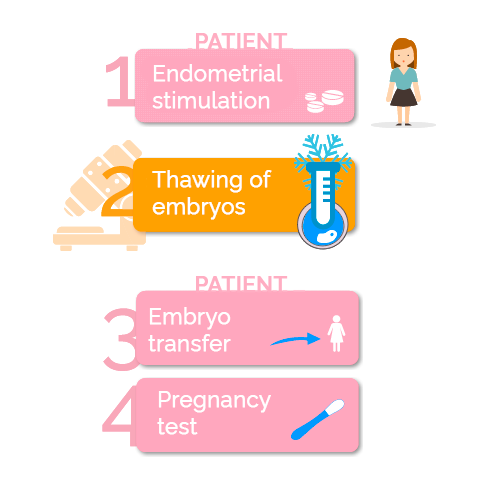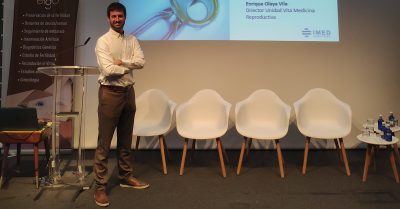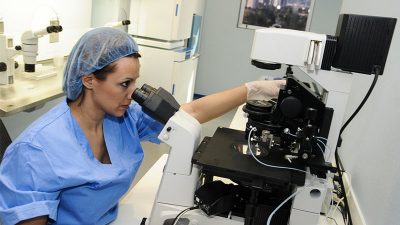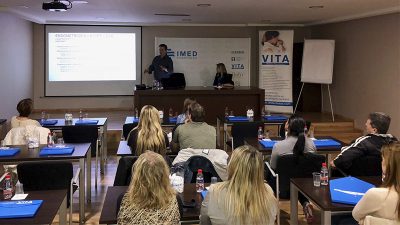Frozen Embryo Transfer (FET): Transfer of ‘cryopreserved’ or frozen embryos

Frozen Embryo Transfer (FET) or transfer of ‘cryopreserved’ embryos is a technique where a previously vitrified embryo is transferred to the patient. These embryos were obtained during previous in vitro fertilization cycles, either because once the transfer was carried out there were spare good quality embryos or because for various reasons the transfer was postponed to another time.
What is the Frozen Embryo Transfer (FET)?
As soon as the woman starts menstruating, she will begin the endometrial preparation through an estrogen treatment, at increasing doses, to achieve the appropriate endometrial thickness, which will be assessed by vaginal ultrasound scans.
Once the endometrium has grown and she is ready to receive the embryos, these can be thawed and transferred. To facilitate embryo implantation, progesterone is administered vaginally.
The good quality embryos spared from previous fresh transfers remain cryopreserved through a vitrification process and stored in suitable tanks filled with liquid nitrogen and kept at -196ºC.
The thawing of the embryos is a process that consists of going from a temperature of -196ºC to a body temperature of 37ºC. In addition, the embryos are incubated in a series of specific media, so that the cryoprotectants (substances used for freezing) are replaced by water, thus achieving cellular rehydration and reactivating the biological functions of the embryo.
At VITA, we have the infrastructure and the specialized human team necessary to carry out embryo ‘cryopreservation’ – or freezing of the embryos – using the latest techniques (vitrification) as well as its subsequent thawing.
Normally, the embryos are thawed the day of the transfer, a few hours before in order to verify that they have survived the process. According to Spanish legislation, no more than three embryos can be transferred per cycle. The patients and the center’s medical-biological team will decide the appropriate number of embryos to transfer.
The gynecologist will use a small catheter to guide the embryos through the cervix and into the uterus. The embryo transfer procedure lasts a few minutes and patient recovery time is minimal.
Normally the embryos are frozen on day 5 of embryonic development, so the pregnancy test will be carried out by means of a blood test 10 days after the embryo transfer.
If the patient suffers from blood loss bleeding before the test is performed, it is important that she never stops taking the medication and that she contacts the medical team for advice.
Throughout the treatment, her personal assistant will be available at all times to answer any questions she may have and support her in this very special moment.

For whom is this technique indicated?
Frozen Embryo Transfer (FET) is indicated for:
- Couples who have attempted to get pregnant through in vitro fertilization cycles with fresh embryos, but couldn’t achieve an evolutionary pregnancy and the spare embryos were cryopreserved (frozen).
- Couples who want to have a new child and cryopreserve embryos for that reason
The cost of this reproduction treatment is much lower, since the treatment only requires preparing the endometrium and using an ultrasound scan to observe the ideal moment for the transfer. It is not necessary to repeat the phases of ovarian stimulation and follicular puncture. The process is shorter and fewer visits to the assisted reproduction centre are required.





